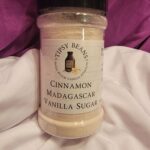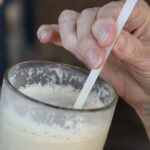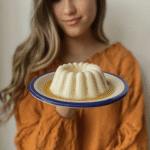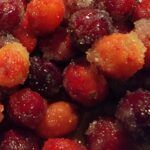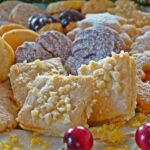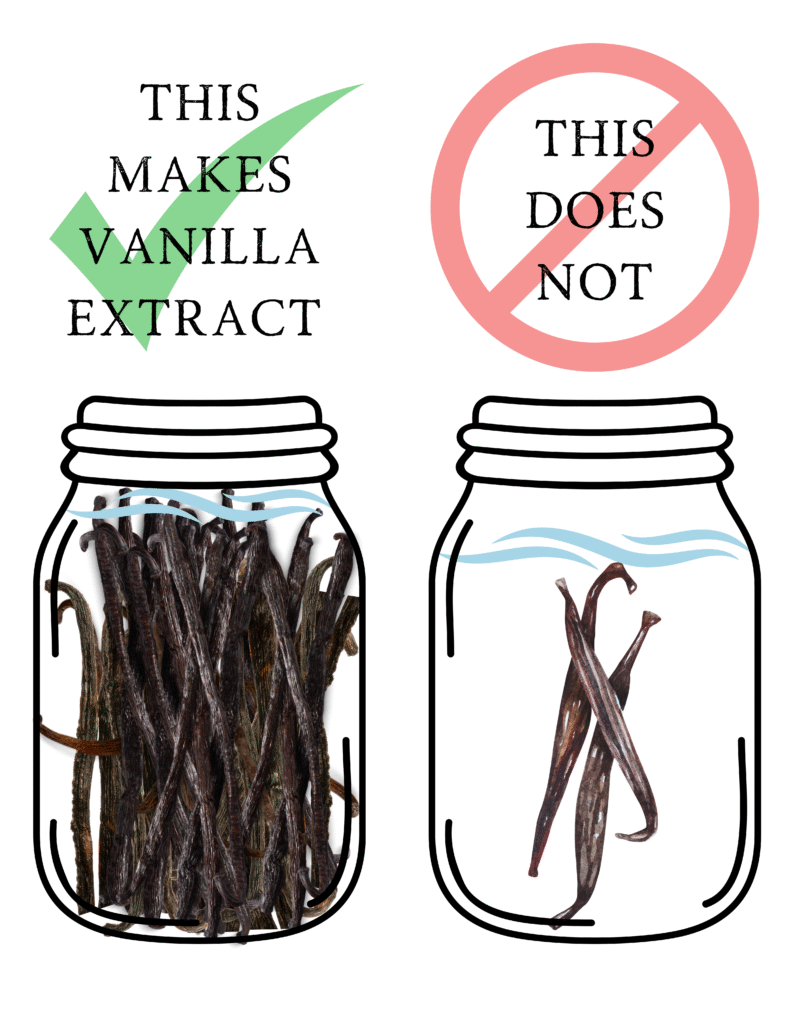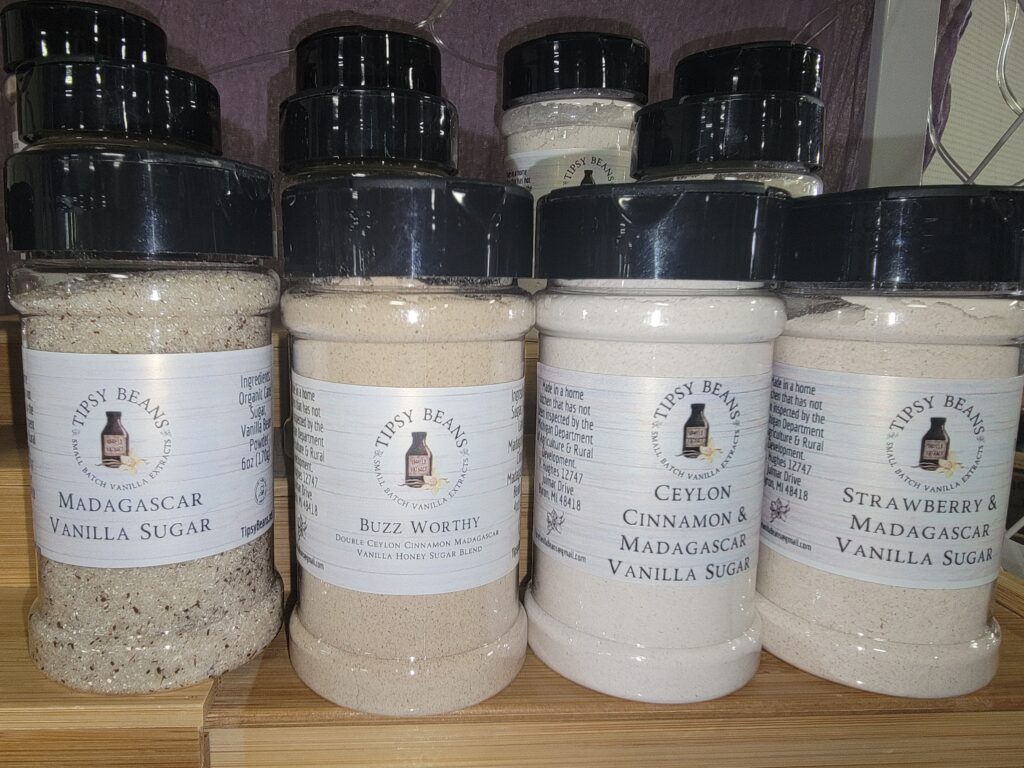***This article is still being written***
You all know my favorite saying: “Always measure vanilla with your heart.”
That is not exactly scientific, but it sure does taste good! When determining how much vanilla to use in a recipe there are a few things to consider:
- What type/form of vanilla should I use
- Can I use a different form of vanilla than what my recipe calls for, and if so, how
- What is the fold or strength of the vanilla
- Is vanilla the main flavor or a supporting one
- Will the vanilla be heated
- Do I want or mind the speckles which do not dissolve
- Will the form of the vanilla I am using disperse evenly in the amount I plan to use
FORM:
Which form of vanilla you use maybe decided on nothing more than what you have available. There are applications which may be more desirable based on the recipe you want to use it in, but often even that is based on personal preference. For example, you may want vanilla specks in your cheesecake but want your ice cream to be spotless.
Yes, You can almost always use a different form of vanilla.
It is usually a matter of if and how using a different form will change the recipe structure. Usually you are using such a small amount that any difference is negligible, and no changes are needed to the rest of the recipe. But, there times when using a different form will result in an altered outcome. For example, if using a lot of vanilla powder in a low liquid recipe, you might need to add more liquid to compensate.
Form Conversion:
1 Teaspoon Vanilla Extract = 1 Teaspoon Vanilla Paste = 1/2 Teaspoon Vanilla Powder = ~ 2 inches of Vanilla Bean*
2 inches of Vanilla bean is subjective as beans can be as skinny as a stick or as wide as a chubby thumb in addition to a huge variation in length. 2 inches is for an average healthy dainty pinky thick vanilla bean. Those emaciated toothpick beans at the grocery store will need more.
FOLD:
This refers to how much vanilla bean by weight is extracting in a volume of alcohol and is subject to government regulation. For example: just under 2 ounces of alcohol to 1 cup of alcohol will create a double fold in time.
Single Fold = Regular Strength = Use exactly as the recipe states
Double Fold = Double Strength = Use half of what the recipe calls for
Triple Fold = Triple Strength = Use a third of what the recipe calls for
Extracts:
By definition all extracts are made with alcohol. Legally, to call it a vanilla extract, you must have, at minimum, just under an ounce of vanilla beans to 1 cup of alcohol. There are a variety of ways to extract, and some may even help speed up the process of fully saturating the alcohol – but at a cost. For example, low heat can help extract quicker, but it is at the cost of some of it’s flavor compounds. A better way, in my opinion, is to cut up the vanilla beans and shake the jars daily. More surface area leads to easier extraction. Still you can’t, and shouldn’t try to, rush perfection!
There is a lot of bad info on the internet stating you only need a few beans per liter or not weighing beans at all. Some sources falsely claim you only need to extract for a few weeks up to 3 months. These may make a delicious vanilla infused alcohol, but they will never meet government standards for extract.
While there are government standards for the bean to alcohol ratio, there is no requirement on how long an extract takes to make. You might be able to make a passible extract in under 6 months, but it won’t be excellent. Nothing beats time in bringing out the hundreds of flavor notes hidden inside the vanilla bean. You should not be able to read through the extract bottle. While there are some varieties of vanilla that produce lighter extracts than others, alcohol that has absorbed all the vanilla it can will be deep and dark caramel to brownish-red in color.
Extracts are possibly the easiest and most versatile way to use vanilla in your recipes. They can easily be blended into most any application.
Whole Beans:
Powder:
Paste:
Vanilla paste is a wonderful hybrid of sorts, blending the ease of extracts with the visual benefits of powder. This is made using vanilla beans, sugar, corn syrup or other syrupy sweetener – we use invert sugar cane syrup-, and alcohol. Some recipes call for water as well. It is ready to use quickly, that very same day it is made. Although waiting a few weeks is best. We blend ours and let it sit for a month before we re-blend and package. This is particularly helpful when making paste from a more fibrous bean. While using corn syrup over other sweeteners would help the vanilla bean specks remain in suspension, we are going a little healthier route using invert syrup without additives.
The best way to store paste is at room temperature, low humidity, and pouring a little alcohol on top in between use. Pour the alcohol off into a clean bowl, measure out what you need, and replace the alcohol. Never store paste (nor extract, fresh beans, or powder) in the refrigerator. This can easily cause condensation with the container and mold will grow. Constant stirring will introduce air and the natural bacteria of the environment, not using clean utensils, and double dipping can all potentially shortening its shelf life.
Whole bean Vanilla, Powder, and Paste need liquid and heat to release its full flavor. They are desirable for speckled presentations as ground vanilla beans will not dissolve.
Shelf Life:
Extract has a shelf life of 10 years, easily, if well stored. Paste has a shelf life of up to 3 years. Powder for 2 years. Fresh beans have days to weeks at best. They must be tossed in alcohol repeatedly, dried, or professionally vacuum sealed (Professional sealing should give up to a year of shelf life unless the seal is compromised). Vacuum sealing fresh beans at home should extend its life for up to a few months, but if they were not properly treated first, mold will quickly develop. Alternately, you can make extract out of your fresh beans.

